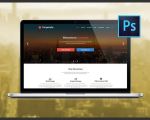- 1-Key-Criteria-for-Valuing-Website-Design
- 2-Understanding-the-Impact-of-Design-on-User-Experience
- 3-Methods-to-Assess-Website-Design-Quality-Effectively
- 4-Case-Study-Real-World-Example-of-Website-Design-Valuation
- 5-Professional-Insights-Into-Website-Design-Value
- 6-How-Website-Design-Value-Affects-Business-Success
- 7-Where-to-Find-Reliable-Website-Design-Services-and-Resources
1. Key Criteria for Valuing Website Design
When learning how to value the design of a website, several key criteria come into play. These include aesthetics, usability, functionality, responsiveness, and overall user engagement. A well-designed website is not just visually appealing but also intuitive and accessible across devices.
For example, design elements such as consistent branding, clean layouts, and easy navigation contribute heavily to a site’s perceived value. These factors directly influence visitor retention and conversion rates.
2. Understanding the Impact of Design on User Experience
User experience (UX) is a vital component when valuing a website’s design. Good UX design minimizes user frustration and encourages exploration, making visitors more likely to stay longer and engage with content or services.
How a website guides a visitor’s journey, including load times and accessibility features, can drastically affect its value. For instance, slow loading or cluttered pages reduce user satisfaction and may negatively impact search engine rankings.
3. Methods to Assess Website Design Quality Effectively
3.1 Analytical Tools and Metrics
Tools like Google Analytics, heatmaps, and user feedback surveys provide quantitative data on how users interact with a website’s design. These insights help evaluate the effectiveness of design elements and highlight areas needing improvement.
3.2 Expert Reviews and Usability Testing
Professional assessments by UX designers and usability testing sessions give qualitative feedback. Observing real users navigate the site reveals pain points and usability issues that analytics alone might miss.
3.3 Competitive Benchmarking
Comparing a website’s design with competitors’ sites offers perspective on industry standards and innovative features. This benchmarking helps determine if a website’s design stands out or falls behind.
4. Case Study: Real-World Example of Website Design Valuation
Consider the example of a mid-sized e-commerce website recently redesigned to improve customer engagement. The redesign focused on streamlining the checkout process, enhancing mobile responsiveness, and refreshing the visual branding.
Post-launch analytics showed a 25% increase in average session duration and a 15% boost in conversion rate. By valuing the design improvements through these tangible results, the company justified the investment and secured further funding for future upgrades.
5. Professional Insights Into Website Design Value
Experts emphasize that how to value the design of a website goes beyond looks. They advise assessing the alignment of design with business goals, brand identity, and target audience needs.
For instance, a corporate site requires professionalism and trustworthiness, while a creative portfolio might prioritize visual impact and uniqueness. Balancing these aspects enhances both perceived and actual website value.
6. How Website Design Value Affects Business Success
A website with high design value supports marketing efforts, improves customer satisfaction, and drives sales. Poor design, on the other hand, can lead to lost opportunities and damage brand reputation.
Investing in quality design should be viewed as a strategic business decision. Companies that recognize this often outperform competitors who neglect web design’s importance.
7. Where to Find Reliable Website Design Services and Resources
For those interested in valuing or improving their website design, platforms like SitePoint 24 offer curated services and expert advice. Whether you need professional designers, SEO optimization, or helpful tools, SitePoint 24 provides comprehensive solutions tailored to your needs.
Exploring these resources can guide you toward maximizing your website’s design value and achieving better business outcomes.








